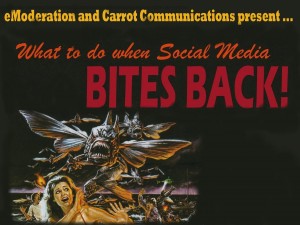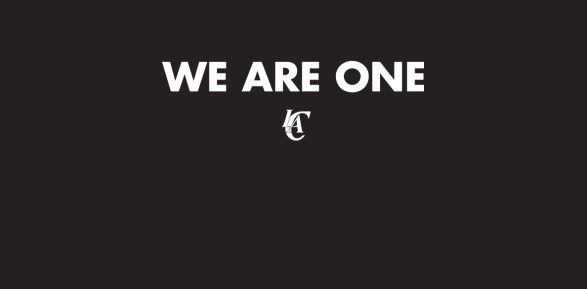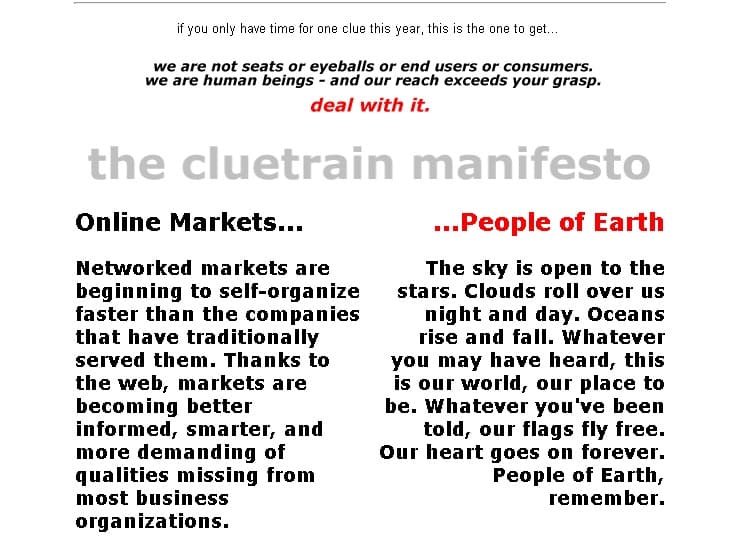Clearly, I’ve missed out on some big language revolution here. Do grown women really use words like FrooFroo, noonoo and lala when talking about their genitalia? Femfresh seems to think so. Now, personally, I don’t find the brand’s choice of language offensive, I just think it’s a bit stupid. I did, however, find some of the comments that it spawned hilarious.
Femfresh presumably wanted people to find its adverts endearing and playful, rather that patronising, but sadly, you can’t control how a campaign will be received. So, for the benefit of those who had more pressing things to do than keep track of the Femfresh Facebook page being slaughtered, here is a summary of what went down in LaLa land this month.
The Facebook page centres around the same ‘care for down there’ campaign that we’re seeing on billboards everywhere. That means searching questions such as this one:
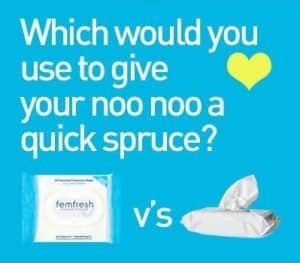
Which spawned responses along these lines:
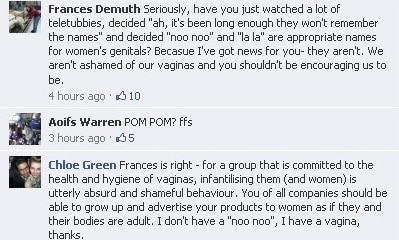
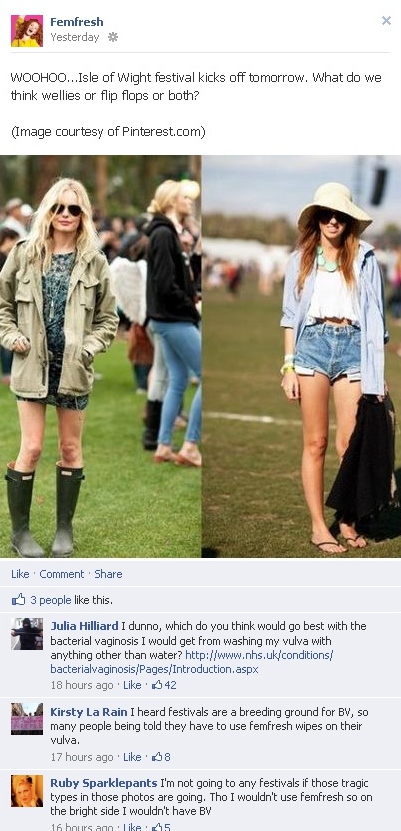
After every noonoo-themed update came a stream of sometimes funny, sometimes off-colour jokes, and comments from people who were either seriously offended or just saying how dire the ads were. After a while, the brand decided to take action.
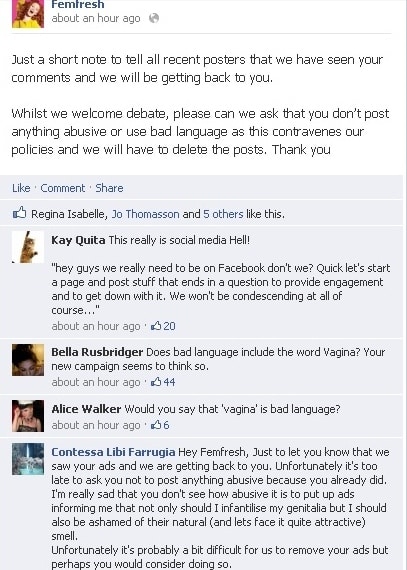
Femfresh continued to post the same seemingly innocuous updates, this time with less of the froofroo. But it didn’t stop the anti-brand campaigners from finding something to pick over.
By this stage, the social media backlash was starting to get picked up by the blogosphere, and being retweeted and commented on all over the place, including newspapers like the Guardian. So, what’s a brand to do?
On Saturday 23rd, Femfresh decided to delete the old Facebook page and replace it with a new one. Logically, one would assume that this was done to have a clean slate – with no place for lala (or any of the other Teletubbies). Yet, one would be wrong. We now have cake!
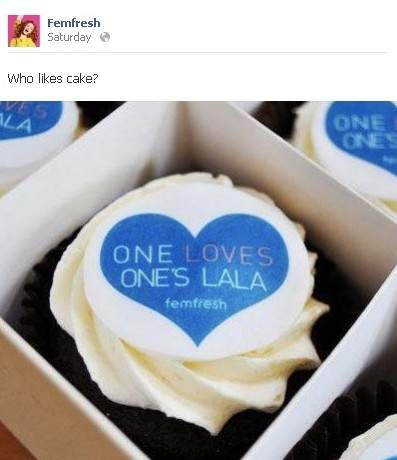
And so it continued…

Why the brand re-started the page with the same kind of content (which showed that it either wasn’t listening, or just didn’t care about people’s opinions) is beyond me.
I think one of the problems here is that the brand doesn’t seem to address the underlying issue that many of its detractors were highlighting: that of the link with the product and BV. A playful, fun campaign – and the language that goes with it – doesn’t sit well with women campaigning against the brand on the basis that it actually causes more damage than good. This doesn’t sit well with a strapline that says ‘care for down there’ (unless you count ‘caring’ as contracting BV). The brand could learn from how Tampax handles the issue of Toxic Shock Syndrome – by educating women on the risks, rather than completely ignoring them. This really is the fail of the month.
Urban Fail
Cosmetics brand Urban Decay has always operated under a strict no testing on animals policy, so when it announced that it would start to sell in China, which demands that all make-up retailers use animal testing, it was going against its own brand values.
Existing customers took to Facebook in protest.
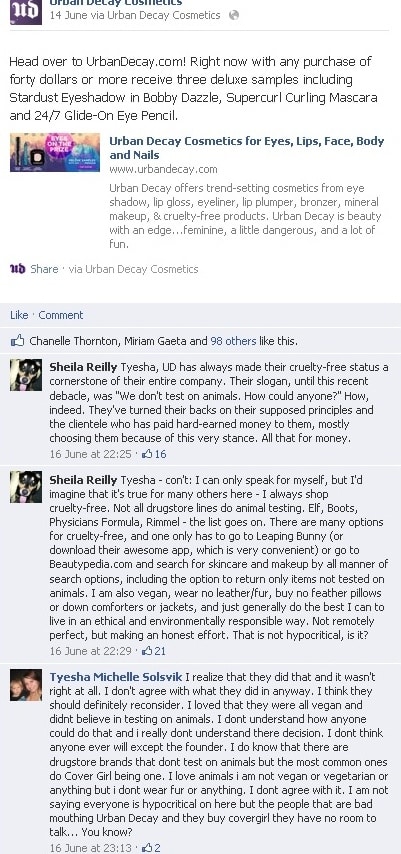
The brand’s response to its customers’ (quite reasonable) expectations that no animal testing would mean no animal testing, was to say that they had made a ‘thoughtful decision’. That’s nice, but its customers don’t care about its thoughtfulness. Its customers are signing petitions instead.
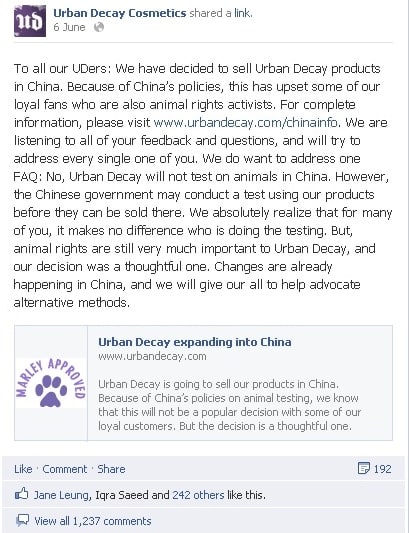
Lost in translation
CorpComms Magazine highlighted a social media kerfuffle over Korean Air’s use of language on some of its adverts. The strapline on the brand’s ad – intended to promote flights to Kenya – read: ‘Fly Korean Air and enjoy the grand African Savanna, the safari tour, and the indigenous people full of primitive energy’.
Soon #PrimitiveEnergy was trending on Twitter as Kenyan nationals kind of objected to being referred to as primitive. The airline responded by apologising, saying it had been an error in translation and removed the ad from the website.
Korean Air handled the situation well, rebuilding its reputation by apologising and taking action quickly to stop this getting out of control.
There were also two great examples of social media use that are worth highlighting this month. Firstly, the amazing Greenpeace ‘Arctic Ready’ campaign that managed to fool half of Twitter into thinking it really was a Shell campaign that had backfired. (Of course, given the level of Shell branding involved one would assume that lawyers are already on the case…but as of today the site is still up).
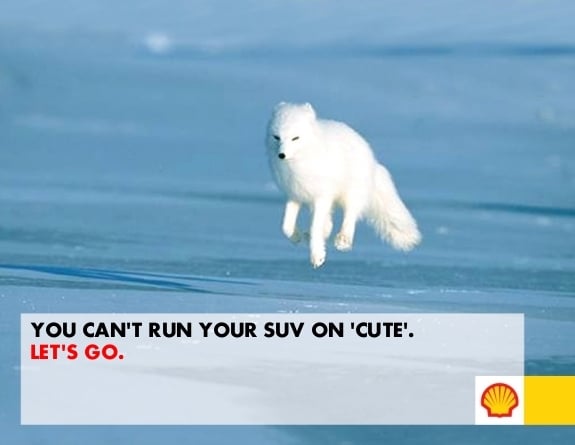
Then there was the post-match tweet from @VisitEngland, which was a fantastic way to get attention, and RTs.
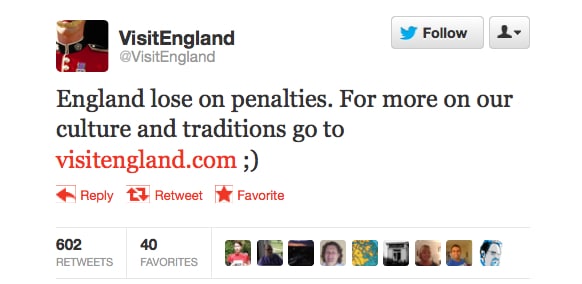
We’d be interested to hear what other social media fails and successes you’ve seen this month.


